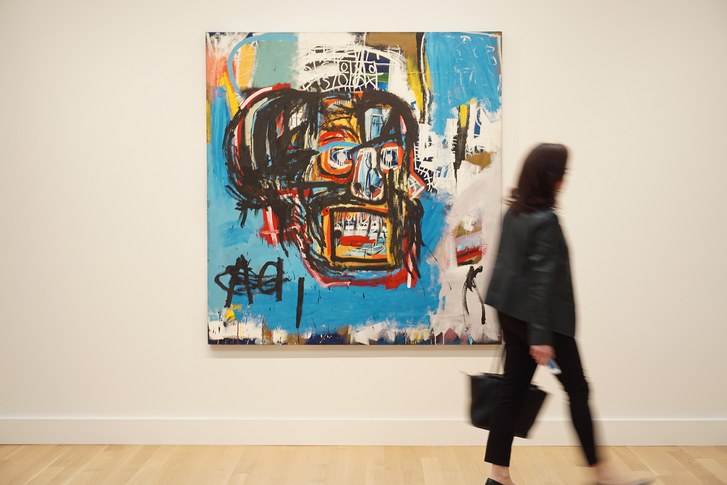What we can all learn from Basquiat: The artist who gave up too soon...
What we can all learn from Basquiat: The artist who gave up too soon...
By Michelle A. Reed
Studies show that most artists have a versatile often hyperactive frame of mind. The world and its history are filled with the outlets of the most creative individuals. Either it be dance, literature, or even portraits, artists seem to have a beautiful way of communicating with the rest of the world.
Born on December 22nd, 1960, in Brooklyn New York, Jean-Michel Basquiat was an African American painter who rose to fame during the beginning of the Neo-impressionism era. His father was a Haitian accountant and his highly supportive mother was Puerto Rican. Although suffering from mental-health issues his entire life Basquiat's mother always was a place of peace even when she became hospitalized.
Although he had run away from home, often sleeping outside, Basquiat was a middle-class kid who attended private schools and independently explored the art world with his mother even as a toddler.
Initially, Basquiat was a graffiti artist. In the 70s he formed a duo with childhood friend names Al Diaz and they called themselves Samo, which meant “Same old shit.” Their eye-catching work consisted of tagging buildings in the lower east side that had boldly conscious statements such as “Samo as an alternative to food stamps.”
The Neo impressionism era became popular around the mid-80s helping with his success. Its rise being similar to that of Hip Hop culture. Basquiat’s work was abstract and expressive containing dialogue that often brought out bold perspective. He was thought of as extremely rebellious. Although his work displayed depth and bravado in a beautifully twisted yet childlike blatancy.
Once he gained notoriety Basquiat even collaborated with Italian artist Francesco Clemente and American artist Andy Warhol. Basquiat did a show with Warhol that included “Ten punching bags” which seemed to be a rebuttal to Leonardo Da Vinci’s “The last supper.” Its purpose was to fight all forms of oppression. Basquiat’s most expensive piece of work was a 1982 untitled painting of a skull. At $110.5 million, this piece became the sixth most expensive artwork sold at an auction.
Basquiat Painting Sells for $110.5 Million
Around that time gallerist Annina Nosei, was rumored to have a genius black kid locked in her basement making masterpieces. To which Jean-Michel Basquiat commented, “If I was white, they would just call it an artist-in-residence.” Ultimately he surpassed what was expected of him racially and socially being a black kid from Brooklyn.
It seemed as though more mental obstacles allied with the success of Basquiat. His affiliations and fame allowed him easy influences in a negative direction. Jean Michel Basquiat, unfortunately, became addicted to heroin not long after his popularity began. On August 12th, 1988, his 22-year-old girlfriend found him overdosed in his bathroom at 28 years old. His funeral was a small closed casket service with family and only a few members of the art world. It was said he left behind 1,198 drawings, sketchbooks, prints, and paintings. His father Gerard Basquiat, inherited the estate and when he died in 2013 he left the estate to his daughters.
There are documentaries associated with the life and work of Basquiat including “The radiant child” and also “Rags to riches.” If nothing else Basquiat’s life teaches us not only to give into our creative passions, but to remain grounded and focused during those transitioning stages to success.
In 2017, Yusaku purchased Basquiat's Untitled (1982), a powerful depiction of a skull, at auction for a record-setting US$110,487,500--the most ever paid for an American artwork and the sixth most expensive artwork sold at an auction,surpassing Andy Warhol's "Silver Car Crash (Double Disaster)" which sold in 2013 for $105 million.[
BASQUIAT THE ART & THE MAN FACTS:
Credit- Artlistr
1. Basquiat came from a culturally rich, yet troubled family.
After his parents divorced. Basquiat’s mother was institutionalized for mental illness. He then left his father’s due to physical and emotional abuse. Prior to becoming famous, he spent the next handful of years homeless, staying at friends’ houses, park benches, and abandoned buildings.
2.His style was shaped by his history, both urban and ethnic.
Many of his works depict black celebrities such as writers, athletes, and musicians. He also often featured the griot, an oral storyteller in Western African societies.
3. Though very young, Basquiat’s talent captured the interest of Andy Warhol.
He was the youngest artist to join “documenta,” an international exhibition of contemporary and modern art held every five years in Germany.
4. . Basquiat’s street smarts and daring were instrumental in his rise to fame.
Homeless, he supported himself by peddling postcards and sweatshirts featuring his art. With the rise of graffiti art and Neo-Expressionism, Basquiat’s work finally gained traction in the Times Square Show, a landmark Punk Art exhibit. His first solo exhibition came two years later.
5. He died after seven short years in the industry.
Basquiat’s rise to prominence was accompanied by an equal rise to his personal struggles. He vacationed in Hawaii to kick his heroin addiction, but ultimately failed and died of an overdose.



